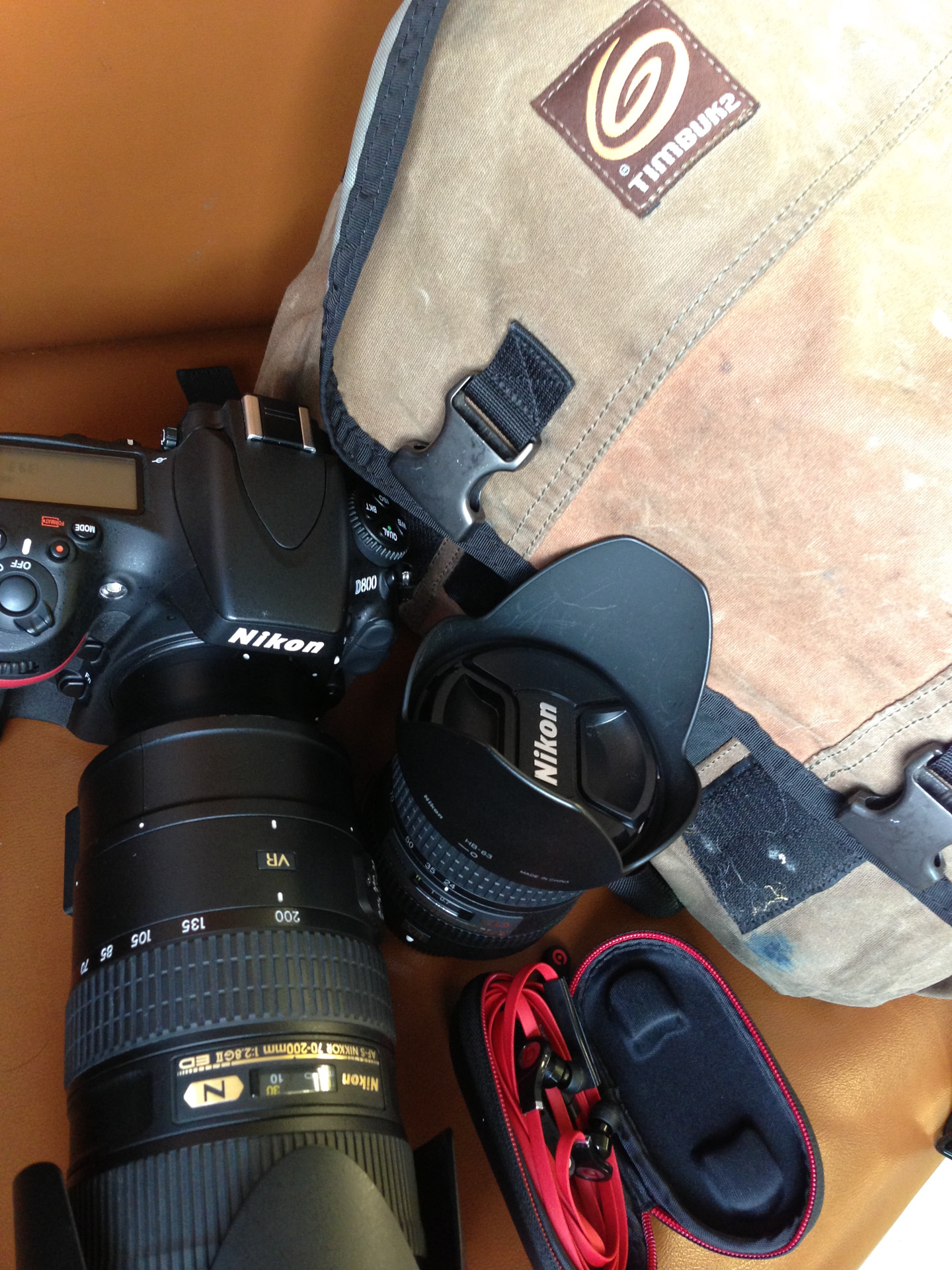Shooting mirrorless
Mirrorless cameras are all the rage - particularly in Europe and Asia, where space has always been a premium. After much online and retail research (much to the consternation of the fine folks at Glazer's Camera, my local pro shop), I decided to go ahead and purchase one. My choice was the Olympus E-PL5 and I'll spend the next paragraph explaining why I chose that. Feel free to skip over, because this blog is really about ways to take great, stable, shots with mirrorless cameras. I chose the Olympus E-PL5 because I was looking for a camera that has these qualities: Can fit in my pocket, touch-screen focus, no electronic viewfinder, high quality photos, and great lens selection. I did not want or need an electronic viewfinder ("EVF") because those can't fit in my pocket - with the possible exception of the Sony Nex6. Based on those requirements, my choices came down to the Sony Nex-6, Panasonic GX-1, and the Olympus E-PL5. Sony Nex series is wonderful, but they simply do not have the lens choices. Panasonic GX-1 felt beautiful in my hand, but its sensor is "old technology" whereas the Olympus E-PL5 is 16mp and, more importantly, is the same as the OMD-5 which, at this point in time, is generally considered to be the best 43 camera on the market. In the end, I chose the Olympus because of the newer sensor and because the rear screen flips up...which gets us back to what this article is about.

 I took this camera for a spin on a recent trip to Vietnam, Cambodia, Korea and England - together with my "monster" Nikon D800. Normally I eschew neck straps as 'for tourists' and prefer to have a simple wrist grip for my DSLR, while keeping the camera and other lenses in the relatively small, nondescript, weathered waxed canvas messenger bag pictured here, which also houses my computer and other gadgets. I had purchased a $15 soft case for the Oly that clips to the shoulder strap of the messenger bag, thinking that would be an easy way to protect my investment. I quickly discovered that it made no sense; it simply took too much time to pull the camera out, in order to get a shot. Also, the first time I did that, the tiny thing went catapulting out of my hands and onto the thankfully soft lap of the person sitting next to me on the ferry. To protect this purchase, I decided instead to attach the ubiquitous neck strap (they always give you one; I always throw them away) and keep the camera around my neck. This turned out to be a great idea because with the camera hanging in front of me, it was always there, always ready for the photo. More importantly, the neck strap works as a kind of inverse tripod, steadying the camera much better than if I were holding it to my face, looking through an eye-level viewfinder. It also provides a lower point of view, which in most cases I found convenient for shooting people in markets or in other candid situations. And I still had the option to hold it up above my head and flip the viewer down for getting those Pulitzer-potential shots looking over the crowds and down into whatever they are looking at.
I took this camera for a spin on a recent trip to Vietnam, Cambodia, Korea and England - together with my "monster" Nikon D800. Normally I eschew neck straps as 'for tourists' and prefer to have a simple wrist grip for my DSLR, while keeping the camera and other lenses in the relatively small, nondescript, weathered waxed canvas messenger bag pictured here, which also houses my computer and other gadgets. I had purchased a $15 soft case for the Oly that clips to the shoulder strap of the messenger bag, thinking that would be an easy way to protect my investment. I quickly discovered that it made no sense; it simply took too much time to pull the camera out, in order to get a shot. Also, the first time I did that, the tiny thing went catapulting out of my hands and onto the thankfully soft lap of the person sitting next to me on the ferry. To protect this purchase, I decided instead to attach the ubiquitous neck strap (they always give you one; I always throw them away) and keep the camera around my neck. This turned out to be a great idea because with the camera hanging in front of me, it was always there, always ready for the photo. More importantly, the neck strap works as a kind of inverse tripod, steadying the camera much better than if I were holding it to my face, looking through an eye-level viewfinder. It also provides a lower point of view, which in most cases I found convenient for shooting people in markets or in other candid situations. And I still had the option to hold it up above my head and flip the viewer down for getting those Pulitzer-potential shots looking over the crowds and down into whatever they are looking at.
With the camera dangling lightly and inobtrusively from my neck (like those old Roliflex's), I was able to take advantage of the different shooting modes offered by the E-PL5: Standard shutter-release half-press to focus; tap the screen (as shown) to select the focus point, or tap the screen to select and shoot at the same time. An added bonus is the convenience in switching lenses - hands free- while the camera dangles. Sweet!
One other comment I'd like to make. Probably when traveling, it makes sense to use a 'travel zoom' on this camera. I'd consider the 35-100 f2.8 for that purpose, once my pocketbook gets filled again. But another option is to have a couple cheaper, sharper primes and - shock - just add a second body! That way, you can pick up the appropriate camera and shoot away - instantaneously!
Here is a gallery of photos taken with the Olympus Zuiko 45mm portrait lens.
Photos of the Cambodia portion of my trip, including shots from the Olympus as well as the D800, are found in the previous blog post.
*By the way, all of the photos in this article were taken with an iPhone.


